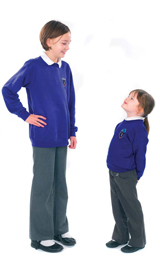Making comparisons is key to children's ability to understand measures of mass and capacity, explains Mike Askew
Comparison is at the heart of all measures. Knowing that a mound of flour weighs 150g, or that a jug contains 200ml of milk, are not, in themselves, useful pieces of knowledge. But if you are hoping that your pancakes will compare favourably to the ones your grandmother made, then your quantities have to measure up to the ones she used. Based on the big idea of comparing, learning about most measures involves similar stages (for ease of reference, this article splits these into Key Stages. But the ages at which children might meet these ideas are usually more fluid):
1. Direct comparing
2. Indirect comparing with informal units, such as sticks, shells or egg-cups
3. Indirect comparing using formal units, such as metres, kilograms or litres.
We cannot, however, assume that when children learn about measuring length they simply transfer this understanding to measuring weight or capacity. As length is often taken as the canonical measure to teach (partly, I suspect, because it is the easiest to set up), in this article I am going to focus on weight and capacity, and some key issues that they present.
Directly comparing weight and capacity
 Lengths can usually be compared directly simply by putting things side-by-side. Children have little difficulty knowing who is the taller of a pair of children or which is the longer scarf: what you see is what you know. Weight is more challenging, in that comparing is based on bodily sensation and both the kinesthetic and the visual can be misleading. The large cardboard box might look heavier than the small stone, but place one on each of your up-turned hands and the pressure in the palm of your hand from the stone may make if feel heavier than the box. The impartial way to find the heavier is to use balance scales, so these need to be around in the classroom sooner than we might introduce rulers or measuring jugs. Although a bit time consuming to prepare, it is helpful to have a collection of sealed, wrapped containers or boxes with different amounts of clay or dried beans placed inside, so that children have to act as human balance scales to decide which of a pair they think is heavier before testing out their choice.
Lengths can usually be compared directly simply by putting things side-by-side. Children have little difficulty knowing who is the taller of a pair of children or which is the longer scarf: what you see is what you know. Weight is more challenging, in that comparing is based on bodily sensation and both the kinesthetic and the visual can be misleading. The large cardboard box might look heavier than the small stone, but place one on each of your up-turned hands and the pressure in the palm of your hand from the stone may make if feel heavier than the box. The impartial way to find the heavier is to use balance scales, so these need to be around in the classroom sooner than we might introduce rulers or measuring jugs. Although a bit time consuming to prepare, it is helpful to have a collection of sealed, wrapped containers or boxes with different amounts of clay or dried beans placed inside, so that children have to act as human balance scales to decide which of a pair they think is heavier before testing out their choice.
Estimating weights
From a collection of objects, label one as the ‘target’ weight: the children sort the collection into two sets, those objects they think are heavier than the target and those they think are lighter. They record this sorting and then re-sort the objects by balancing them against the ‘target’. Do they get better with practice?
Comparing capacities
A wide collection of empty plastic containers – drink and shampoo bottles, yogurt and cream cartons – provides most of the kit you need for direct comparison of capacity. Again, sight alone can be deceptive: does that tall thin bottle have the greater capacity, or does the short, wide one? Some ‘flowing’ material is needed to make the comparison – rice, dried beans or small pasta are less messy than sand or water.
Cut the top off a two litre plastic drinks bottle and invert it to provide a funnel that reduces spillages. Children select a pair of containers, decide which they think has the greater capacity and check this. Do they fill what they think is the smaller bottle first, pour the contents into the larger and look for unfilled space? Or do they take the opposite approach, pour from the larger into the smaller and look for material left in a bottle?
Indirectly comparing capacity and weight
In a sense, children are indirectly comparing capacities even when just ordering two containers as some sort of intermediate ‘measure’ that can be poured from container to container has to be introduced. Ordering three or more containers cranks up the level of challenge. Containers can only be compared in pairs so keeping track of the relationship between, say, five containers is far from trivial. It is interesting to simply pose this as a challenge without any guidance and see what strategies children come up with.
Comparing using large, uniform containers
Using a smaller unit – such as an eggcup – and counting how many of these it takes to fill a larger container is a good way of measuring capacity. But before introducing this method, children benefit from pouring the contents of several differently shaped containers into a set of larger, uniform containers. A collection of two litre plastic bottles, tops sliced off at the ‘neck’, provide a set of uniform containers that can be compared side-byside (I sometimes wonder if capacity is only in the curriculum to keep the soft-drinks industry buoyant). Children order their different containers by what they estimate the capacities to be, fill each one with dried goods and then decant each into one of the larger uniform containers. Comparing the level to which each of the larger, matching containers is filled sets the stage for reading scales on measuring jugs later.
Using smaller units
When using a repeated smaller unit, it is helpful to start off by filling up multiple copies of the unit, rather than having only one to fill and counting the number of times it is filled. Plastic egg cartons are perfect for this: cut one up to provide collection of single ‘units’. Bottles full of rice can be compared by repeatedly filling a single ‘egg-cup’ unit and transferring each filling to a different section in a complete egg-tray, so that the children can see that, for example, one container held eight eggcups, while the other held nine as these are set out in the egg-trays.
 Making weighing machines
Making weighing machines
Just as bottles are compared two at a time, balance scales can only compare the weight of objects pair wise. As with the bottles, ordering five or six objects by ‘feel’ of weight and then checking the order using the balance scales is a challenging problem to solve.
Using non-standard units to measure the weight of objects requires multiple units to be used, providing a different experience than for length or capacity: I can measure the capacity of a large bottle using only one measuring spoon and repeated filling and counting, but I cannot weigh a box using only one pebble - I must have several. Measuring weight may be more ‘obvious’ in the sense of having to balance an object with a number of units (non-standard or standard) but the tables get turned with more sophisticated tools. With a measuring jug we can still, literally, see the amount of liquid in the jug, and we can see what is being used for the measure. But when weighing tools with vertical or circular scales there are no visible ‘weights’ providing this sense of the measure. It is good for children to make their own informal measuring jugs (masking tape up the side of a straight-sided bottle, marking the level when repeatedly pouring in a number of units), but it is probably more important for them to make an elastic band (spring) weighing ‘machine’. Cutting about 12cm off the bottom of a juice carton provides a suitable ‘pan’: punch a hole midway along each side, thread four knotted strings through and join them together about 20 centimetres above the pan. This can then be attached to a larger rubber-band or length of elastic and suspended over a ruler held firmly in place, or hook, and in front of a sheet of paper. Children mark the position of the empty pan - either it’s top or bottom edge - and its position with objects placed in the pan (making sure that they are consistent in where they are measuring from) to create a scale.
Use coaching to turn failures into learning success
Ace-Classroom-Support
Make World Book Day Extra Special This Year
Ace-English
Reorganise your music room
Ace-Music
